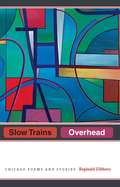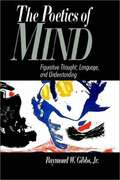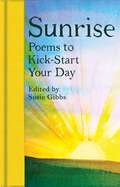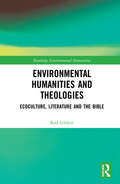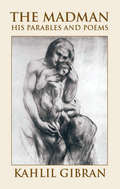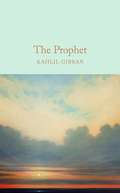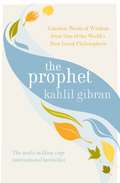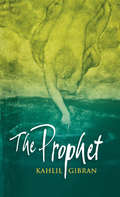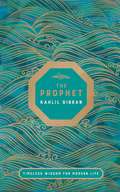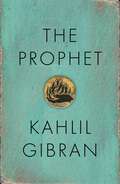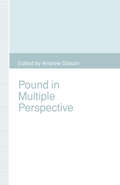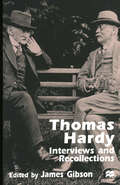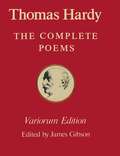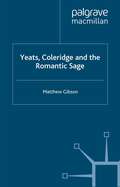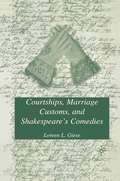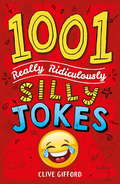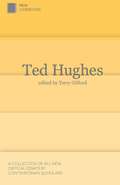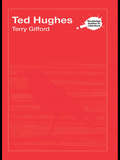- Table View
- List View
Last Lake (Phoenix Poets)
by Reginald GibbonsFrom Ritual A slow parade of old west enthusiasts, camp song and hymn, came in along the winding way where rural declined to suburban, slow riders and wagoners passing a cow staked to graze, some penned cattle looking vacantly up—not in vacant lots the ancient icons of wealth they had been in odes, prayers and epics, in sacrifices and customs of bride-price or dowry. (It’s good people no longer make blood sacrifices, at gas stations and stores, for example, and in the crunching gravel parking lots of small churches—oh but we do.) “The evening forgives the alleyway,” Reginald Gibbons writes in his tenth book of poems—but such startling simplicities are overwhelmed in us by the everyday and the epochal. Across the great range of Gibbons’s emblematic, vividly presented scenes, his language looks hard at and into experience and feeling. Words themselves have ideas, and have eyes—inwardly looking down through their own meanings, as the poet considers a lake in the Canadian north, a Chicago neighborhood, a horse caravan in Texas, a church choir, a bookshelf, or an archeological dig on the steppes near the Volga River. The last lake is the place of both awe and elegy.
Last Lake (Phoenix Poets)
by Reginald GibbonsFrom Ritual A slow parade of old west enthusiasts, camp song and hymn, came in along the winding way where rural declined to suburban, slow riders and wagoners passing a cow staked to graze, some penned cattle looking vacantly up—not in vacant lots the ancient icons of wealth they had been in odes, prayers and epics, in sacrifices and customs of bride-price or dowry. (It’s good people no longer make blood sacrifices, at gas stations and stores, for example, and in the crunching gravel parking lots of small churches—oh but we do.) “The evening forgives the alleyway,” Reginald Gibbons writes in his tenth book of poems—but such startling simplicities are overwhelmed in us by the everyday and the epochal. Across the great range of Gibbons’s emblematic, vividly presented scenes, his language looks hard at and into experience and feeling. Words themselves have ideas, and have eyes—inwardly looking down through their own meanings, as the poet considers a lake in the Canadian north, a Chicago neighborhood, a horse caravan in Texas, a church choir, a bookshelf, or an archeological dig on the steppes near the Volga River. The last lake is the place of both awe and elegy.
Last Lake (Phoenix Poets)
by Reginald GibbonsFrom Ritual A slow parade of old west enthusiasts, camp song and hymn, came in along the winding way where rural declined to suburban, slow riders and wagoners passing a cow staked to graze, some penned cattle looking vacantly up—not in vacant lots the ancient icons of wealth they had been in odes, prayers and epics, in sacrifices and customs of bride-price or dowry. (It’s good people no longer make blood sacrifices, at gas stations and stores, for example, and in the crunching gravel parking lots of small churches—oh but we do.) “The evening forgives the alleyway,” Reginald Gibbons writes in his tenth book of poems—but such startling simplicities are overwhelmed in us by the everyday and the epochal. Across the great range of Gibbons’s emblematic, vividly presented scenes, his language looks hard at and into experience and feeling. Words themselves have ideas, and have eyes—inwardly looking down through their own meanings, as the poet considers a lake in the Canadian north, a Chicago neighborhood, a horse caravan in Texas, a church choir, a bookshelf, or an archeological dig on the steppes near the Volga River. The last lake is the place of both awe and elegy.
Slow Trains Overhead: Chicago Poems and Stories
by Reginald GibbonsFew people writing today could successfully combine an intimate knowledge of Chicago with a poet’s eye, and capture what it’s really like to live in this remarkable city. Embracing a striking variety of human experience—a chance encounter with a veteran on Belmont Avenue, the grimy majesty of the downtown El tracks, domestic violence in a North Side brownstone, the wide-eyed wonder of new arrivals at O’Hare, and much more—these new and selected poems and stories by Reginald Gibbons celebrate the heady mix of elation and despair that is city life. With Slow Trains Overhead, he has rendered a living portrait of Chicago as luminously detailed and powerful as those of Nelson Algren and Carl Sandburg. Gibbons takes the reader from museums and neighborhood life to tense proceedings in Juvenile Court, from comically noir-tinged scenes at a store on Clark Street to midnight immigrants at a gas station on Western Avenue, and from a child's piggybank to nature in urban spaces. For Gibbons, the city’s people, places, and historical reverberations are a compelling human array of the everyday and the extraordinary, of poverty and beauty, of the experience of being one among many. Penned by one of its most prominent writers, Slow Trains Overhead evokes and commemorates human life in a great city.
Slow Trains Overhead: Chicago Poems and Stories
by Reginald GibbonsFew people writing today could successfully combine an intimate knowledge of Chicago with a poet’s eye, and capture what it’s really like to live in this remarkable city. Embracing a striking variety of human experience—a chance encounter with a veteran on Belmont Avenue, the grimy majesty of the downtown El tracks, domestic violence in a North Side brownstone, the wide-eyed wonder of new arrivals at O’Hare, and much more—these new and selected poems and stories by Reginald Gibbons celebrate the heady mix of elation and despair that is city life. With Slow Trains Overhead, he has rendered a living portrait of Chicago as luminously detailed and powerful as those of Nelson Algren and Carl Sandburg. Gibbons takes the reader from museums and neighborhood life to tense proceedings in Juvenile Court, from comically noir-tinged scenes at a store on Clark Street to midnight immigrants at a gas station on Western Avenue, and from a child's piggybank to nature in urban spaces. For Gibbons, the city’s people, places, and historical reverberations are a compelling human array of the everyday and the extraordinary, of poverty and beauty, of the experience of being one among many. Penned by one of its most prominent writers, Slow Trains Overhead evokes and commemorates human life in a great city.
Slow Trains Overhead: Chicago Poems and Stories
by Reginald GibbonsFew people writing today could successfully combine an intimate knowledge of Chicago with a poet’s eye, and capture what it’s really like to live in this remarkable city. Embracing a striking variety of human experience—a chance encounter with a veteran on Belmont Avenue, the grimy majesty of the downtown El tracks, domestic violence in a North Side brownstone, the wide-eyed wonder of new arrivals at O’Hare, and much more—these new and selected poems and stories by Reginald Gibbons celebrate the heady mix of elation and despair that is city life. With Slow Trains Overhead, he has rendered a living portrait of Chicago as luminously detailed and powerful as those of Nelson Algren and Carl Sandburg. Gibbons takes the reader from museums and neighborhood life to tense proceedings in Juvenile Court, from comically noir-tinged scenes at a store on Clark Street to midnight immigrants at a gas station on Western Avenue, and from a child's piggybank to nature in urban spaces. For Gibbons, the city’s people, places, and historical reverberations are a compelling human array of the everyday and the extraordinary, of poverty and beauty, of the experience of being one among many. Penned by one of its most prominent writers, Slow Trains Overhead evokes and commemorates human life in a great city.
The Poetics Of Mind: Figurative Thought, Language, And Understanding (PDF)
by Raymond W. GibbsIn this bold new work, Ray Gibbs demonstrates that human cognition is deeply poetic and that figurative imagination constitutes the way we understand ourselves and the world in which we live. The traditional view of the mind holds that thought and language are inherently literal and that poetic language is a special human ability requiring different cognitive and linguistic skills than employed in ordinary language. This view has imposed serious limitations on the scholarly study of mental life and on everyday folk conceptions of human experience. Poetics of Mind overturns the traditional perspective by showing how figurative aspects of language reveal the poetic structure of mind. Ideas and research from psychology, linguistics, philosophy, anthropology, and literary theory are used to establish important links between the poetic structure of thought and everyday use of language. Particular use is made of the extensive research that has accumulated in experimental psycholinguistics and cognitive linguistics over the past 15 years. Poetics of Mind evaluates current philosophical, linguistic, and literary theories of figurative language, using tools provided by psycholinguistic and cognitive psychology research. It relates the empirical work on figurative language understanding to broader issues concerning the nature of everyday thought and reasoning. As such, it will be of crucial interest to students and researchers in psychology, cognitive science, and linguistics.
Sunrise: Poems to Kick-Start Your Day
by Susie GibbsIf you struggle to get out of bed in the morning, here’s a poetry collection that’s just right for you. Sunrise is an energizing and rousing collection of classic poetry all about purpose, hope and perseverance. Part of the Macmillan Collector’s Library; a series of stunning, pocket-sized classics with ribbon markers. These beautiful books make perfect gifts or a treat for any book lover. This edition is edited and introduced by Susie Gibbs.Wise, reassuring words and magical verses conjure up the promise and possibilities of each new day. With contributions from poets such as William Wordsworth, G. K. Chesterton, Ian McMillan, Christina Rossetti, Walt Whitman, Emily Dickinson and Edward Lear, the wonderful poetry in Sunrise will inspire its readers to greet each day with optimism and confidence.
Environmental Humanities and Theologies: Ecoculture, Literature and the Bible (Routledge Environmental Humanities)
by Rod GiblettMany ways of thinking about and living with ‘the environment’ have their roots in the Bible and the Christian cultural tradition. Environmental Humanities and Theologies shows that some of these ways are problematic. It also provides alternative ways that value both materiality and spirituality. Beginning with an environmentally friendly reading of the biblical story of creation, Environmental Humanities and Theologies goes on to discuss in succeeding chapters the environmental theology of wetlands, dragons and watery monsters (including crocodiles and alligators) in the Bible and literature. It then gives a critical reading of the environmental theology of the biblical book of Psalms. Theological concepts are found in the works of English writers of detective and devotional stories and novels, American nature writers and European Jewish writers (as succeeding chapters show). Environmental Humanities and Theologies concludes with an appreciation for Australian Aboriginal spirituality in the swamp serpent. It argues for the sacrality of marsh monsters and swamp serpents as figures of reverence and respect for living bio- and psycho-symbiotic livelihoods in bioregions of the living earth in the Symbiocene. This is the hoped-for age superseding the Anthropocene. Environmental Humanities and Theologies is aimed at those who have little or no knowledge of how theology underlies much thinking and writing about ‘the environment’ and who are looking for ways of thinking about, being and living with the earth that respect and value both spirituality and materiality. It is a new text nurturing sacrality for the Symbiocene.
Environmental Humanities and Theologies: Ecoculture, Literature and the Bible (Routledge Environmental Humanities)
by Rod GiblettMany ways of thinking about and living with ‘the environment’ have their roots in the Bible and the Christian cultural tradition. Environmental Humanities and Theologies shows that some of these ways are problematic. It also provides alternative ways that value both materiality and spirituality. Beginning with an environmentally friendly reading of the biblical story of creation, Environmental Humanities and Theologies goes on to discuss in succeeding chapters the environmental theology of wetlands, dragons and watery monsters (including crocodiles and alligators) in the Bible and literature. It then gives a critical reading of the environmental theology of the biblical book of Psalms. Theological concepts are found in the works of English writers of detective and devotional stories and novels, American nature writers and European Jewish writers (as succeeding chapters show). Environmental Humanities and Theologies concludes with an appreciation for Australian Aboriginal spirituality in the swamp serpent. It argues for the sacrality of marsh monsters and swamp serpents as figures of reverence and respect for living bio- and psycho-symbiotic livelihoods in bioregions of the living earth in the Symbiocene. This is the hoped-for age superseding the Anthropocene. Environmental Humanities and Theologies is aimed at those who have little or no knowledge of how theology underlies much thinking and writing about ‘the environment’ and who are looking for ways of thinking about, being and living with the earth that respect and value both spirituality and materiality. It is a new text nurturing sacrality for the Symbiocene.
The Madman: His Parables and Poems
by Kahlil GibranWidely known in America as author of The Prophet, which sold more copies in the 20th century than any other book but the Bible, the great Lebanese-American poet and artist Kahlil Gibran (1883–1931) first became known to Americans in 1918 with the publication of The Madman.Thought-provoking and inspiring, the book is a collection of memorable, life-affirming parables and poems, many of them casting an ironic light on the beliefs, aspirations, and vanities of humankind — and many reminiscent of the work of Tagore and Nietzsche, both of whom were strong influences on Gibran.Among the 35 poems and parables in this volume are "How I Became a Madman," "The Two Hermits," "The Wise Dog," "The Good God and the Evil God," "Night and the Madman," "The Three Ants," "When My Sorrow Was Born," "And When My Joy Was Born," and many more.The book includes several illustrations by the author, whose exquisite drawings are reminiscent of Rodin and the best of Blake. ". . . the greatest of Arab Romantics and father of a 20th-century Romantic tradition whose impact on Arab writers has been at least as strong as that of 19th-century figures such as Wordsworth and Keats on their English-speaking counterparts." — Dr. Suheil Bushrui, Director of the Kahlil Gibran Chair on Values and Peace, University of Maryland
The Prophet (Macmillan Collector's Library #9)
by Kahlil GibranUtterly unique and beloved around the world, The Prophet is a collection of twenty-six poetic essays by the Lebanese artist, philosopher and writer Khalil Gibran. Telling the story of the prophet Al-Mustafa and his conversations with various acquaintances as he returns home after a long absence, the book touches on subjects of universal concern, including love, friendship, passion, pain, religion and freedom.Thought-provoking, comforting and wise, the simple truths of The Prophet remain compelling and rewarding to this day.Designed to appeal to the booklover, the Macmillan Collector's Library is a series of beautiful gift editions of much loved classic titles. Macmillan Collector's Library are books to love and treasure.
The Prophet: With Original 1923 Illustrations By The Author
by Kahlil GibranThe Prophet is known and loved by readers all over the world. It is a wise and warm testimony to life, whose wisdom speaks to us all. This beautiful edition of Kahlil Gibran's timeless classic is illustrated with the author's own mystical drawings.
The Prophet
by Kahlil GibranOne of the most beloved classics of our time, Kahlil Gibran's The Prophet has been translated into many languages and sold millions of copies since its original publication in 1923. Its 28 chapters consist of poetic reflections on the human condition, presented as discussions between the prophet, Almustafa, and the people of the city of Orphalese. Gibran was a Lebanese poet, philosopher and artist, and his fame and influence have spread far beyond the land of his birth. In America, where he lived for the last twenty years of his life, he began to write in English, and his books of poetry, illustrated with mystical drawings that have been compared to those of William Blake, are now known all over the world. The Prophet is timeless in its insight into the human condition, and in its calm philosophy and spontaneous joy can be found the expression of the deepest impulses of the human heart and mind.
The Prophet: With Original 1923 Illustrations By The Author
by Kahlil GibranA 20th century classic, The Prophet is thought-provoking, comforting and wise, and its simple truths remain compelling and rewarding to this day.Utterly unique and beloved around the world, The Prophet is a collection of twenty-six poetic essays by the Lebanese artist, philosopher and writer Kahlil Gibran. Telling the story of the prophet Al-Mustafa and his conversations with various acquaintances as he returns home after a long absence, the book touches on subjects of universal concern, including love, friendship, passion, pain, religion and freedom.
The Prophet
by Kahlil GibranThe Prophet is a book of 26 prose poetry fables written in English by the Lebanese-American artist, philosopher and writer Kahlil Gibran. Originally published in 1923, it is Gibran's best known work and has been translated into over 40 different languages. The prophet, Almustafa, has lived in the foreign city of Orphalese for 12 years and is about to board a ship which will carry him home. He is stopped by a group of people, with whom he discusses topics such as life and the human condition. The book is divided into chapters dealing with work, love, marriage, eating and drinking, joy and sorrow, self-knowledge, teaching, friendship, pleasure, beauty, religion, crime and punishment, reason and passion, and death.
Pound in Multiple Perspective: A Collection of Critical Essays
by Andrew GibsonThe book consists of seven essays exploring the relationship between Pound and Browning, Yeats, Ford, Lewis, Joyce, Eliot and American epic tradition. Each essay reconsiders and reassesses one aspect of the poet, his work and his literary connections in the light of fresh insight and new research.
Thomas Hardy: Interviews and Recollections (Interviews and Recollections)
by James GibsonHardy was an unknown architect in 1870, a famous novelist by 1895, and acknowledged as a great novelist, poet and epic-dramatist when he died in 1928. With fame came a never-ending stream of friends and writers anxious to record their impressions of the Grand Old Man of English Literature. Among them were Virginia Woolf, Siegfried Sassoon, Gustav Holst, T.E. Lawrence, H.G. Wells, E.M. Forster, Robert Graves, and very many more. Interviews and Recollections is a selection of the most interesting and important of the many hundreds of recollections which have been gathered together by the Editor over many years. It will be of interest to anyone wishing to know more about Hardy's life, thoughts and writings.
Yeats, Coleridge and the Romantic Sage
by M. GibsonThis work explores an aspect of Yeats's writing largely ignored until now: namely, his wide-ranging absorption in S.T. Coleridge. Gibson explores the consistent and densely woven allusions to Coleridge in Yeats's prose and poetry, often in conjunction with other Romantic figures, arguing that the earlier poet provided him with both a model of philosopher - 'the sage' - and an interpretation of metaphysical ideas which were to have a resounding effect on his later poetry, and upon his rewriting of A Vision.
Wild Women of a Certain Age
by Magi GibsonFrom social and political issues to found poems, Gibson’s fresh, evocative (and sometimes provocative) writing is both modern and timeless. These poems spring from taxis, supermarkets and long car drives through the wind and rain. They spring from fantasies, daydreams, nightmares, from love and hate, but, above all, they exalt and enhance everyday experiences.
Courtships, Marriage Customs, and Shakespeare's Comedies
by L. GieseLoreen L. Giese's study of over 5000 important folios of court depositions contemporary with Shakespeare's plays demonstrates the complex ways those plays participate in and comment upon their culture, rather than stand apart from it. Both the court records and the plays present women as agents who are capable of challenging their traditional roles.
1001 Really Ridiculously Silly Jokes
by Clive GiffordKnow any good jokes? Here are 1001 (yes, one thousand and one!) awesome ones for the whole family to enjoy!Why did the empty sandwich go to the dentist?IT NEEDED A FILLING.What do you call a 20,000-year-old joke?PRE-HYSTERICAL.With jokes galore, puns, one-liners, visual gags, play on words and hilarious illustrations. Divided into sections such as 'Hilarious Holidays', 'Teacher Titters' and 'Football Funnies', this book will never get old and will have your friends and whole family laughing. A hilarious bumper book that will captivate any child and spark an interest in reading - created by the bestselling author of Teenage Kicks and Eye Benders, and winner of the Royal Society Young People's Book Prize.
Ted Hughes (New Casebooks)
by Terry GiffordThis innovative casebook introduces readers to wide-ranging critical dialogue about the work of Ted Hughes, one of the most popular and influential British poets of the twentieth century. In twelve new essays, international authorities on Hughes examine and debate his work, shedding new light on familiar texts. Split into two parts, the first half of this book examines Hughes' work through cultural contexts, such as postmodernism and the carnivalesque, while the second part uses literary theories including postcolonialism, ecocriticism and trauma theory to interpret his poetry. Providing fresh inspiration and insights into the various diverse ways in which Hughes' writing can be interpreted, this volume is an ideal introduction to both literary theory and the work of Ted Hughes for literature students and scholars alike.
Ted Hughes (Routledge Guides to Literature)
by Terry GiffordFor the first time, one volume surveys the life, works and critical reputation of one of the most significant British writers of the twentieth-century: Ted Hughes. This accessible guide to Hughes’ writing provides a rich exploration of the complete range of his works. In this volume, Terry Gifford: offers clear and detailed discussions of Hughes’ poetry, stories, plays, translations, essays and letters includes new biographical information, and previously unpublished archive material, especially on Hughes’ environmentalism provides a comprehensive account of Hughes’ critical reception, separated into the major themes that have interested readers and critics offers useful suggestions for further reading, and incorporates helpful cross-references between sections of the guide. Part of the Routledge Guides to Literature series, Ted Hughes presents an accessible, fresh, and fascinating introduction to a major British writer whose work continues to be of crucial importance today.

